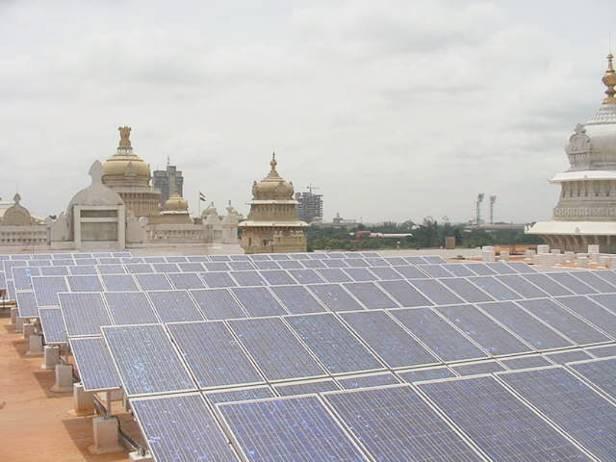The results of India’s latest solar auction are in, and it is bad news for developers of Australian coal projects – solar PV is cheaper for Indian users than the electricity price needed to pay for imports of coal from Australia.
A tender for 500MW of solar capacity in the sunny, south-eastern state of Andhra Pradesh, resulted in First Solar submitting the cheapest bids in an auction that was oversubscribed by more than double – 63 bids, totalling 1291MW in proposed solar developments.
First Solar submitted bids of just over 8 cents US per kilowatt-hour – $0.086/kW/h for 40MW and $US0.087/kWh for another 40MW. In local currency terms the bids came in at INR5.25/kWh and INR5.35. That is significant, because it is below the price required to make coal imports economically viable.
All other bids – developers had to bid the tariff rate for power generated for the first year of the proposed plants operation – ranged from $SU0.092 to $US0.132, with projects ranging in size from 3MW to the upper limit of 100MW.
These remarkably low bids illustrate how quickly large-scale solar is coming down the cost curve in India – in February last year, a Rajasthani solar auction produced a lowest bid equivalent to A11.6c/kWh.
They also confirm that generating power from a large-scale solar plant is now cheaper, in India, than power from new-build coal, particularly those that rely on imported coal.
According to a research note from the Institute of Energy Economics and Financial Analysis (IEEFA), a PPA of between A10c/kWh and A11c/kWh would be required to build a new coal-fired generation plant using imported coal.
“We estimate that a PPA of Rs5.4-5.70/kWh would be required, plus price indexation of 4%pa to justify the construction of … a US$4bn coal-fired power project,” IEEFA says.
“This is double the last reported average sales price of electricity across India of Rs3/kWh and treble the domestic coal-fired power PPA signed over recent years.
Basically, says IEEFA, the required wholesale power price for imported coal is prohibitive relative to domestic coal or renewable energy.
“Wind, solar and hydro facilities can be built faster and / or at lower PPAs. Additionally, the use of renewable energy incorporates a zero fuel cost, such that there is an inbuilt deflationary driver – i.e. zero indexation.
“Given the recent drive by the Reserve Bank of India (RBI) to prioritise the sustained reduction in inflation, renewables support a series of GoI / RBI targets. Importing thermal coal achieves none of these goals, and more likely contradicts them.”
IEEFA analyst Tim Buckley said that, while the imported coal price may come down, lowering the generation price to around 9c/kWh, there was no way developers could bank on prices staying that low, considering the uncertainty surrounding thermal coal.
“(India’s) proposed new coal generation plan is showing signs of significant financial stress and is likely to deliver far lower than expected levels of new supply over the next five years.”
This is not great news for Australia, or more particularly Queensland, which is betting on India’s appetite for imported coal to fund the development of the state’s massive Carmichael coal deposit and the related expansion of the nearby Abbot Point coal port.
The increasingly shaky state of this Queensland coal export plan has been exposed more and more lately, with major international banks officially distancing themselves from the development projects, and signalling they would not back them financially, due to the attached risks – both financial and environmental.
India, meanwhile, is increasingly turning to solar, with government plans to foster development of some of the world’s largest solar PV parks across the country, totalling as much as 20 gigawatts of capacity*, about 10 times what India has built to date.
The Indian government also revealed details this month of an auction of 1GW of solar projects in Andhra Pradesh that will form the first part of a national 15GW roll out of PV between now and 2019. In March, the Solar Energy Corporation of India (SEIC) announced plans to build a 1GW solar factory in Andhra Pradesh.
*An earlier version of this article said the solar parks planned by India would be 20GW each. This is incorrect. They have been tipped to amount to 20GW as a combined total.











